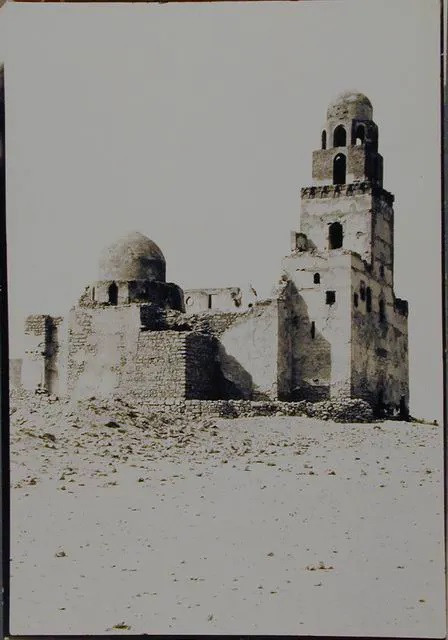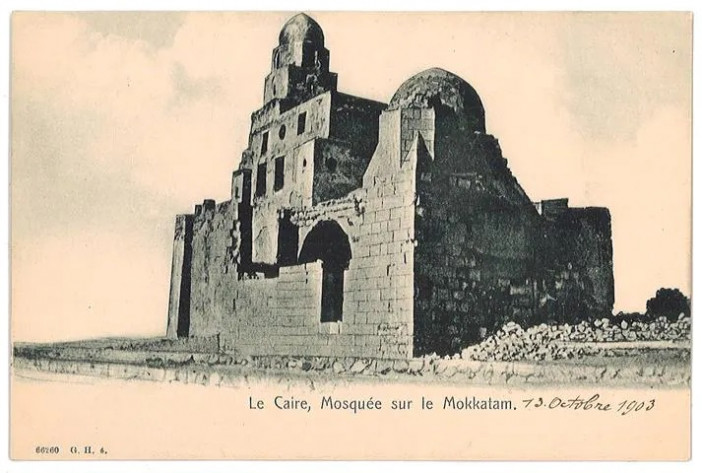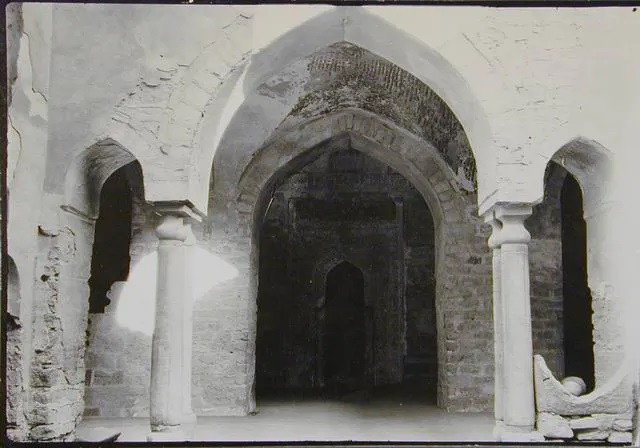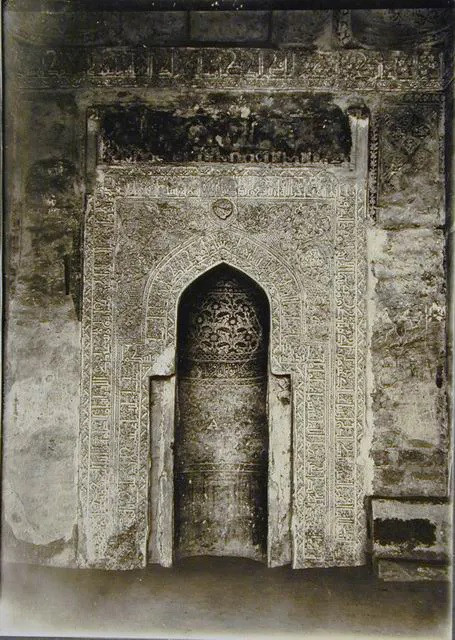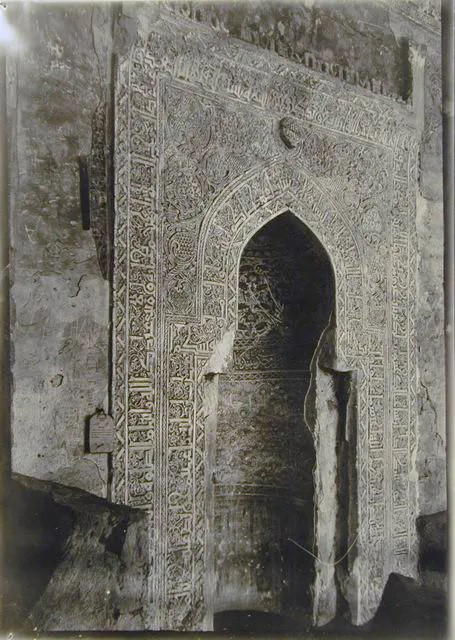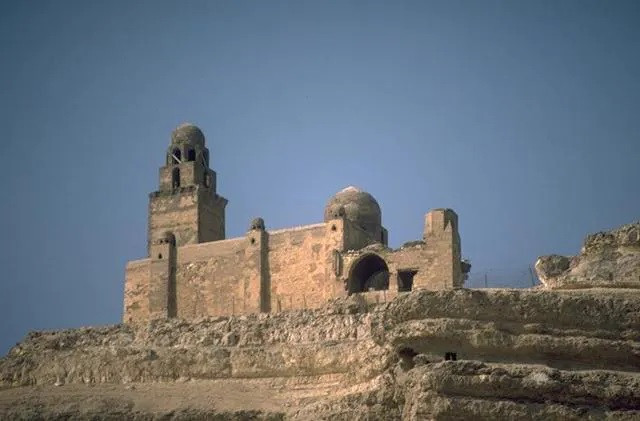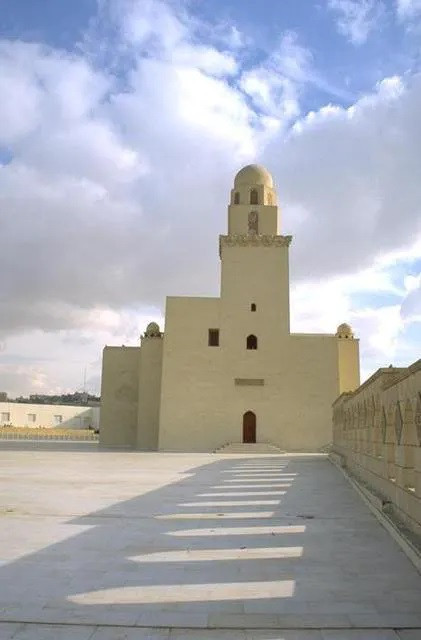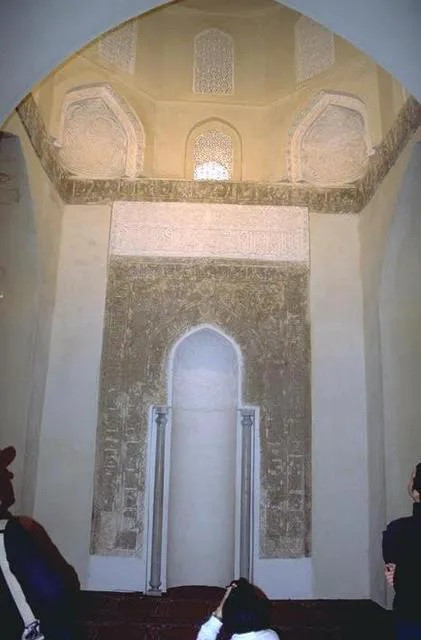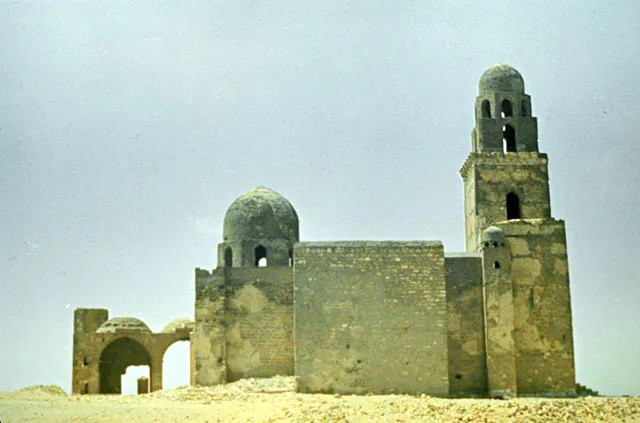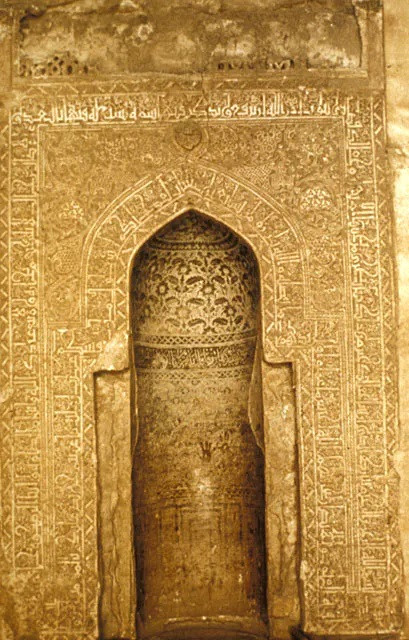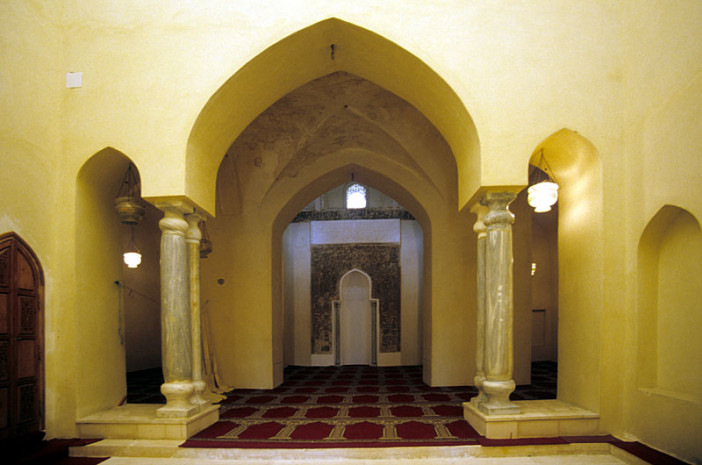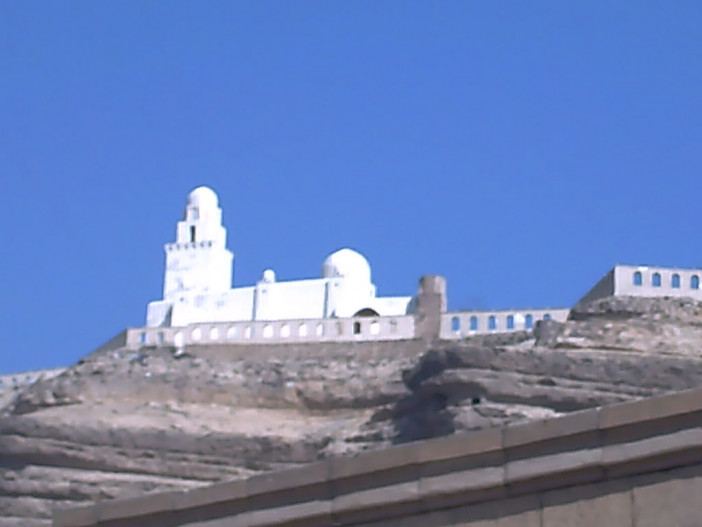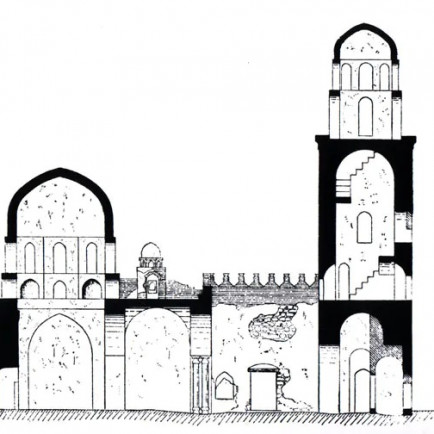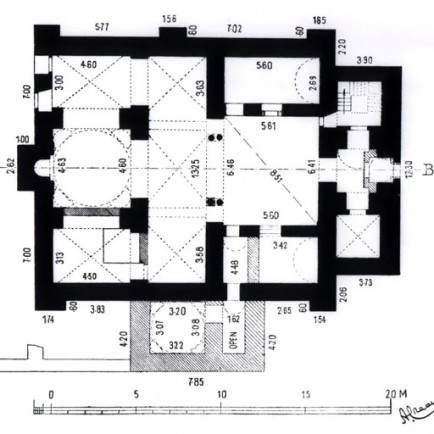Juyushi Mosque
History
The vizier Badr al-Jamali, who served as the Fatimid Caliphate's Amir al-Juyush (Commander of the Armies), constructed the Juyushi Mosque. In 478 AH/1085 CE, the mosque was finished under the direction of Imam-Caliph al-Mustansir Billah. To guarantee a view of Cairo, it was constructed on the tip of the Mokattam.
The mosque most likely served as a Sufi monastery throughout the Ottoman era.
Urban and Architectural
It is a rectangular, symmetrical building made of brick, masonry, and rubble. The vestibule of the entrance leads to a small courtyard that is bordered on both sides by vaulted chambers that may have been built for domestic use because they lack access to the prayer hall. A triple-arched portico on its courtyard side defines a transitional cross-vaulted vestibule that leads to the square dome chamber and two cross-vaulted extensions to the right and left. Despite being designated as a "mashhad" in accordance with its inscription, it is unknown who is buried in this mysterious building.
The oldest tower still standing in Egypt that is related to a building other than a congregational mosque is the minaret over the main entrance. It features the earliest muqarnas cornice still in use in Egypt, which is used to emphasize the visual distinction of the minaret's many components. It has been argued that this Persian theme was transferred into Egypt through Armenian and Syrian mediation as the second instance of this muqarnas feature in Egypt—on the wall of Cairo close to Bab al-Futuh—is also linked to the Armenian vizier and former governor of Syria, Badr al-Jamali. It is also thought that Syrian design influences can be seen in the square shaft of the minaret.
Description
The mihrab, which is framed by a panel of alternate bands of Qur'anic inscriptions and arabesque leaf patterns, all in carved stucco, is a prominent element of the interior. According to Oleg Grabar, this mashhad served as a triumph monument honoring Badr's efforts to reinstate order for Caliph al-Mustansir. Others have reinterpreted this building as a fortified watch-post strategically positioned at the edge of the capital and dressed as a small mosque due to the appearance on the roof of domed edicules too small for any religious purpose and the exaggerated size of the minaret for an underpopulated area like al-Muqattam.
The mosque was a ruin by the 20th century. The Dawoodi Bohra community, led by Mohammad Burhanuddin, reconstructed the mosque after conducting research on the building. During the restoration, architectural components from other Fatimid temples in Egypt served as a guide for what to put where.
References
https://www.archnet.org/sites/2247
https://en.wikipedia.org/wiki/Juyushi_Mosque
https://earth.google.com/web/search/%d9%85%d8%b4%d9%87%d8%af+%d8%a3%d9%85%d9%8a%d8%b1+%d8%a7%d9%84%d8%ac%d9%8a%d9%88%d8%b4/@30.0221253,31.2683144,155.81560206a,900.07454369d,35y,0h,45t,0r/data=CokBGl8SWQolMHgxNDU4MzkxYTQ3YTZlNDkzOjB4YWIyNzMzM2YyMTU0MWE2NRlsexbfqwU-QCF7_DlgskQ_QCoe2YXYtNmH2K8g2KPZhdmK2LEg2KfZhNis2YrZiNi0GAMgASImCiQJRMjHQO8GPkARTeDcVXUBPkAZYAvHYCBEP0Ahbnk4_lA1P0A
Details
Location
27C9+R9R مشهد أمير الجيوش, Entrance for Al Ebageah، الأباجية،، قسم الخليفة،, Cairo Governorate 4253060, Egypt
Worshippers
225
Owners
vizier Badr al-Jamali
Architect Name
Year of Build
1085
Area
450
Drawings
Map
History
The vizier Badr al-Jamali, who served as the Fatimid Caliphate's Amir al-Juyush (Commander of the Armies), constructed the Juyushi Mosque. In 478 AH/1085 CE, the mosque was finished under the direction of Imam-Caliph al-Mustansir Billah. To guarantee a view of Cairo, it was constructed on the tip of the Mokattam.
The mosque most likely served as a Sufi monastery throughout the Ottoman era.
Urban and Architectural
It is a rectangular, symmetrical building made of brick, masonry, and rubble. The vestibule of the entrance leads to a small courtyard that is bordered on both sides by vaulted chambers that may have been built for domestic use because they lack access to the prayer hall. A triple-arched portico on its courtyard side defines a transitional cross-vaulted vestibule that leads to the square dome chamber and two cross-vaulted extensions to the right and left. Despite being designated as a "mashhad" in accordance with its inscription, it is unknown who is buried in this mysterious building.
The oldest tower still standing in Egypt that is related to a building other than a congregational mosque is the minaret over the main entrance. It features the earliest muqarnas cornice still in use in Egypt, which is used to emphasize the visual distinction of the minaret's many components. It has been argued that this Persian theme was transferred into Egypt through Armenian and Syrian mediation as the second instance of this muqarnas feature in Egypt—on the wall of Cairo close to Bab al-Futuh—is also linked to the Armenian vizier and former governor of Syria, Badr al-Jamali. It is also thought that Syrian design influences can be seen in the square shaft of the minaret.
Description
The mihrab, which is framed by a panel of alternate bands of Qur'anic inscriptions and arabesque leaf patterns, all in carved stucco, is a prominent element of the interior. According to Oleg Grabar, this mashhad served as a triumph monument honoring Badr's efforts to reinstate order for Caliph al-Mustansir. Others have reinterpreted this building as a fortified watch-post strategically positioned at the edge of the capital and dressed as a small mosque due to the appearance on the roof of domed edicules too small for any religious purpose and the exaggerated size of the minaret for an underpopulated area like al-Muqattam.
The mosque was a ruin by the 20th century. The Dawoodi Bohra community, led by Mohammad Burhanuddin, reconstructed the mosque after conducting research on the building. During the restoration, architectural components from other Fatimid temples in Egypt served as a guide for what to put where.


